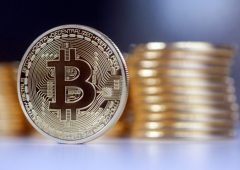Debate Over U.S. Gold Reserves Grows as Calls for Blockchain Tracking and Audits Intensify
24.03.2025 18:13 1 min. read
The idea of applying blockchain to gold reserves has gained attention, with proponents arguing it could improve oversight.
However, Greg Cipolaro of NYDIG emphasized that blockchains, unlike Bitcoin, require centralized verification, making them unsuitable for fully trustless tracking. Still, he suggested that such efforts could increase interest in digital assets and reinforce Bitcoin’s broader narrative.
Momentum for an independent audit of U.S. gold reserves has been growing, with Senator Rand Paul hinting that Elon Musk’s cost-cutting measures should include a review of Fort Knox’s holdings.
Despite regular Treasury audits, skepticism persists, partly due to long-standing conspiracy theories amplified by Trump and Musk. The last time outsiders inspected the vault was in 2017, and before that, in 1974. Officials insist that all gold is accounted for, though doubts remain.
Critics argue that without a fully transparent and independently verified audit, uncertainty will persist. While the U.S. Mint asserts that no significant movement of gold has occurred in years, calls for greater scrutiny highlight a broader mistrust in government institutions. Whether blockchain or traditional audits are the answer, the debate over America’s gold reserves continues.
-
1
FTX Pushes to Dismiss Billion-Dollar Claim from 3AC
23.06.2025 15:00 1 min. read -
2
BIS Slams Stablecoins, Calls Them Ill-Suited for Modern Monetary Systems
26.06.2025 9:00 1 min. read -
3
ARK Invest Cashes In on Circle Rally as Stock Soars Past $60B Valuation
24.06.2025 19:00 1 min. read -
4
FTX Pushes Back Against $1.5B Claim From Defunct Hedge Fund 3AC
23.06.2025 11:00 1 min. read -
5
Trump’s ‘Big, Beautiful Bill’ Approved: What It Means for Crypto Markets
04.07.2025 7:00 3 min. read
Coinbase Strengthens DeFi Push With Opyn Leadership Acquisition
Coinbase has taken a major step toward expanding its decentralized finance (DeFi) presence by bringing onboard the leadership team behind Opyn Markets, a prominent name in the DeFi derivatives space.
Grayscale Urges SEC to Allow Multi-Crypto ETF to Proceed
Grayscale Investments has called on the U.S. Securities and Exchange Commission (SEC) to allow the launch of its multi-crypto ETF—the Grayscale Digital Large Cap Fund—arguing that further delays violate statutory deadlines and harm investors.
Robinhood Launches Ethereum and Solana Staking for U.S. Users
Robinhood has officially introduced Ethereum (ETH) and Solana (SOL) staking services for its U.S. customers, offering a new way for users to earn rewards on their crypto holdings.
Binance CEO Reveals What’s Fueling the Next Global Crypto Boom
Binance CEO Richard Teng shared an optimistic outlook on the future of cryptocurrencies during an appearance on Mornings with Maria, highlighting growing global acceptance, regulatory progress, and strategic reserve integration.
-
1
FTX Pushes to Dismiss Billion-Dollar Claim from 3AC
23.06.2025 15:00 1 min. read -
2
BIS Slams Stablecoins, Calls Them Ill-Suited for Modern Monetary Systems
26.06.2025 9:00 1 min. read -
3
ARK Invest Cashes In on Circle Rally as Stock Soars Past $60B Valuation
24.06.2025 19:00 1 min. read -
4
FTX Pushes Back Against $1.5B Claim From Defunct Hedge Fund 3AC
23.06.2025 11:00 1 min. read -
5
Trump’s ‘Big, Beautiful Bill’ Approved: What It Means for Crypto Markets
04.07.2025 7:00 3 min. read


